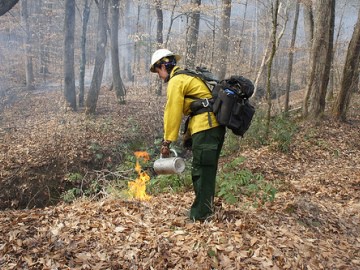 Below is a position statement from the National Association of Forest Service Retirees.
Below is a position statement from the National Association of Forest Service Retirees.
Here’s a link to their website.
What do you think?
Position Statement on Forest Health and Fire, April 27, 2011
To achieve forest health, protection of adjacent communities from catastrophic fire, other forest management goals and to maintain National Forest lands in an ecologically sustainable condition, the NAFSR advocates use of proven silvicultural practices and prescribed fire to achieve these goals.
The National Forests are capable of providing the many values and benefits that people expect from their forests, but they need proper management in order to provide these values. NAFSR supports prescribed fire, commercial timber harvest, and noncommercial treatments on National Forest lands allocated for such uses through appropriate land and resource management planning processes. Further, we believe the commercial utilization payments can be a big part of financing the total treatment needs of the forests.
NAFSR believes that current treatment levels on National Forest lands are insufficient to maintain forest health, meet the goals for hazardous fuel reduction to reduce wildfire risk, provide resilient forests capable of withstanding future shifts in climate conditions, or provide protection from wildfire as well as economic and other community benefits.
Fire control should be aggressive while prescribed fire use should also be increased and appropriately managed. Natural fires should only be allowed to burn when approved plans are clearly indicated under weather, time of year, and fuel conditions encountered, and under the direct supervision of fully qualified fire supervisors.
Planning and treatment must be at an annual scale of millions of acres over the next half century. We must recognize that the environmental costs to wildlife habitat, domestic and industrial water supplies, soils, and viewsheds of inaction, or inadequate levels of action, will be with us for decades to centuries. There will also be serious financial and economic costs to local communities and businesses as well as the taxpayers if action is not taken.
The National Forests have a Congressionally mandated mission, and management goals are determined through comprehensive land management planning processes with extensive public participation, and include not only healthy forest ecosystems but also protection and well being of adjacent communities and other values. Forest managers are then responsible for selecting appropriate, site-specific practices, which may include commercial thinning and harvest, pre-commercial thinning, and use of prescribed fire to accomplish desired forest health, watershed, wildlife and fishery habitat objectives. Consideration must be given to maintenance of a diversity of tree species and age classes, diverse structure and function, and thus treatments should not be limited to any particular size of trees or other vegetation. Focus should always be on the remaining conditions following thinning instead of what is removed. Skillful use of silvicultural practices can achieve desired resource conditions including appropriate forest densities, reduced fuel loads, and mimic natural levels of forest openings and understory vegetation. Healthy forest ecosystems are the key to how disturbance events such as fire or pest outbreaks perform. Removal of excess biomass is critical for allowing fire use to return without detrimental effects.
Forest Service leaders should take advantage of collaborative planning processes with interest groups and communities, while providing focused leadership in order to minimize problems with gridlock resulting from public disagreements with choices made to restore the forests. Building coalitions at national, regional and local levels to support science informed decisions can greatly reduce conflicts that have led to delays in the past.
Appropriately scaled forest industries should be encouraged to utilize and sequester carbon from thinning and harvest products as well as helping the economy of communities.
Furthermore, NAFSR believes that current laws and regulations offer ample protection to sustain the full range of forest values on public lands. We believe that timber harvesting is a legitimate use of the national forests as the multiple-use Sustained Yield Act of 1960 calls for, and that it will promote wildlife and fishery habitat as well as recreation opportunities.
ISSUE
For almost a century, through forest fire protection efforts, wildfire on National Forest lands has been purposely suppressed in many areas that are naturally adapted to periodic low intensity wildfires. We now know from science and experience this policy has had some unintended and undesirable consequences, including altered tree species composition and increased density of trees per acre. This increased stand density, or overstocking, increases fire hazard in most forest types. Because of lack of vigor, dense forests are highly susceptible to insects and diseases and, consequently, increased tree mortality. Excess tree density as well as mortality increases fuel loading, resulting in hazardous forest fire conditions that can put watersheds, wildlife habitat, and other forest values at risk. These conditions also increase fire suppression costs and make wildfire control more dangerous and difficult. Unnatural fires resulting from extremely dense stands create artificial and unnatural conditions for soil erosion, flooding, plant invasion, type conversion and altered viewsheds. The dominant factor affecting forest fires, health, and vigor is stand density.
For nearly four decades, National Forest Managers have recognized the fact that overcrowded forests are not sustainable without some form of treatment. The public as well has seen vast areas succumb to insects, disease and wildfire.
BACKGROUND
Fires in Western ecosystems are problematic with uncharacteristic fire becoming more destructive and costly. Forests on National Forests of the West are most often far too dense. There is a huge increase in woody biomass, mostly in the overstory, above natural levels in almost every forest ecosystem. This excess forest density has contributed to a serious decline in herbaceous vegetation in the forest understory.
Certain circumstances can exert uncommon stress on forests and predispose them to extraordinary insect outbreaks and damage. In stands that are unmanaged by either silviculture, natural or prescribed fire, trees often grow too close together and develop small crowns and root systems. These stands have low vigor, leading to susceptibility to drought, insects, diseases, and catastrophic wildfire. Under these stressful conditions, tree mortality can be extremely high. Large areas of aging forests are also susceptible to insects and diseases. During the past decade, several of these forest health problems have arisen simultaneously, causing extensive tree mortality.
Because of widespread forest health problems, many of our forests would benefit from thinning or other measures to control stand density, reduce vulnerability to insect-caused mortality, increase diversity of tree sizes, and accomplish regeneration of desired tree species. However, National Forest managers often find themselves engaged in debate about the relative benefits and perceived detrimental effects of using active intervention to affect the future condition of national forest lands.
Some environmental concerns are misguided and lead to inaction or wrong action.
Unnatural and destructive wildfires are increasing in size faster than management is addressing the problems. Human developments on forest in-holdings of private land create both fire suppression and forest management problems.
Costs of forest management can be partially, if not completely, recovered from scientifically designed treatments based on soundly developed plans





 The Ozark-St. Francis National Forest in Arkansas. Photo credit: Rhea S. Rylee, U.S. Forest Service.
The Ozark-St. Francis National Forest in Arkansas. Photo credit: Rhea S. Rylee, U.S. Forest Service.



